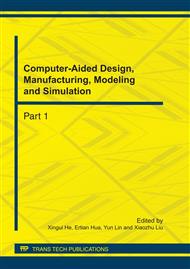p.684
p.688
p.697
p.703
p.709
p.714
p.718
p.723
p.730
The Research and Application of Vehicle Identification Using KPCA Based on the Car Networking Environment
Abstract:
Traffic systems are increasingly complex, and traffic management works will gradually to become accurate, informationized and intelligent. The traffic management mode based on the experience can no longer adapt to the requirements of development. The introduction of high-tech to control traffic is urgently needed.The proposion of car networking lays a theoretical foundation for this. In this paper, we design, implemented and evaluate a com-pact signal processing system on an embedded mote for vehicle classification via acoustic characteristics. The main components of hardware system include a sound collector, an embedded mote and a wireless transmitting module. In software system we chose kernel principal component analysis (KPCA) as feature extraction method because of its high accuracy of nonlinear differential ability. This system enables an embedded mote to detect a passing vehicle and to decide its type. Using a testbed based on this system, we compare classification quality with the combination of KPCA and SVM to other typical methods. Briefly, we find that the KPCA yields better classification quality than the others in vehicle identification.
Info:
Periodical:
Pages:
709-713
Citation:
Online since:
August 2011
Authors:
Keywords:
Price:
Сopyright:
© 2011 Trans Tech Publications Ltd. All Rights Reserved
Share:
Citation:


